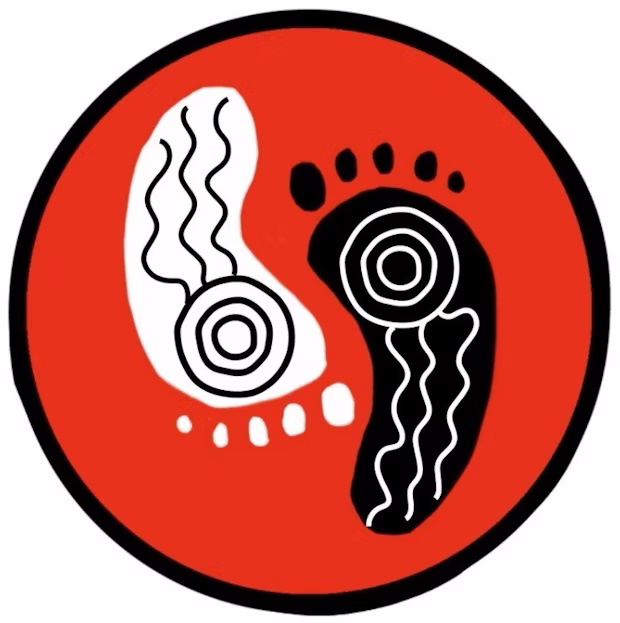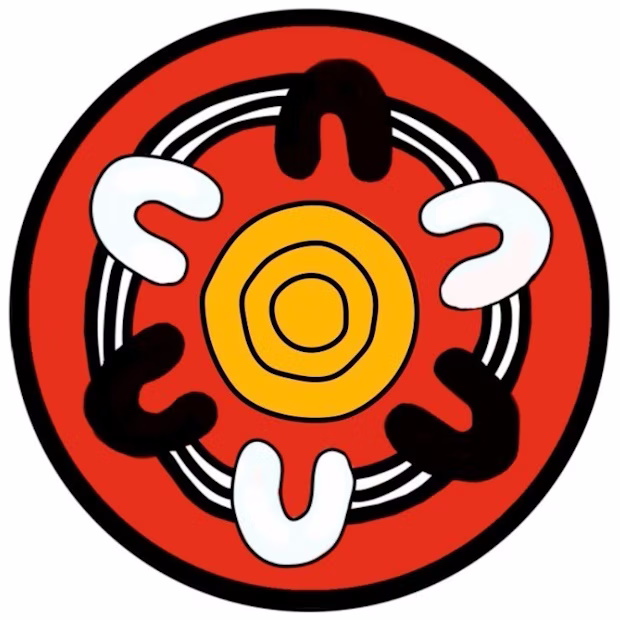The Aboriginal Land Economic Development Agency
Guiding Principles
A set of 8 guiding principles has been resolved for the Strategy. All aspects of the strategy along with ALEDA governance, operations and systems will be driven from these guiding principles. These reflect Aboriginal aspirations and globally accepted best practice use of principles in this space.
These are the statements of each principle accompanied by the logos that have been used throughout the NT-wide consultation process.
1. Country

Country is the basis of Aboriginal law and identity. Authority comes from Country. It is culturally important that any economic development activity on Country is done properly. This means that any economic development activity needs the consent of the TOs according to the usual processes of the Aboriginal Land Rights (NT) Act; that any economic development activity happens in accordance with TO wishes; that it does not make it difficult for TOs to access their Country, or to use it for ceremonial purposes; and that it does no damage to any sacred site.
The flag was used for this design because the strategy does not require giving away any rights to, or ownership of, Aboriginal Country. The strategy is about economic development on Aboriginal Country, so the yellow circle has black lines in it representing this.
2. Sustainability

Country is the foundation of Aboriginal wellbeing and the wellbeing of all things. It is culturally, ecologically and economically important that the economic development of Country not only does no harm but that the physical environment is maintained or improved by that activity. All economic development activity on Country will be regularly assessed using both Aboriginal and non-Aboriginal methods to measure change and determine suitable responses.
To tread lightly (footprint) on Country (do no damage) requires knowledge of how to do that. The best of both Aboriginal and non-Indigenous knowledge must be used. Each must pay attention to the other, so there are white lines in the black foot and black lines in the white foot. The red background represents Country
3. Self-Determination

Aboriginal-controlled economic development is the means to achieve true self-determination: the knowledge to make decisions and the power to enact them. It is morally important that all economic development on Country supports the strengths of both Aboriginal and non-Aboriginal systems to work together to find the best solutions.
To be in control requires all the information. That information has to make sense and an individual then needs the power to act on it. The black hand on the red background represents Aboriginal people in control of what happens on Country. The white circles are held in the black hand, because it is about Aboriginal people having access to all the knowledge so they can act.
4. Knowledge

The successful economic development of Country requires everyone’s knowledge. Aboriginal people want to work with other people to seek a balance between the economic rights and needs, and the imperative to care for Country. It is both morally and economically important that Aboriginal knowledge has equal priority in the planning, activation and management of all economic development on Country.
There are two laws involved in economic development. They don’t often talk well to each other and the non-Indigenous can dominate. The strategy is designed to bring them together and benefit from both so neither dominates. The yellow cog is the strategy, or the individual project on Country (red background). It is the thing that brings the two knowledges together and makes them work.
5. Free Prior Informed Consent

Both Aboriginal and non-Indigenous people have the right to understand the implications of any proposed economic development activity on Country. It is morally and economically important that information is presented in ways that people understand, and that enough time is provided for people to take information on board before they are required to make decisions about actions.
A person needs to understand before they can act. The strategy is about bringing together two ways of doing things. These two ways need to understand each other for the partnership to work and to avoid the dominance of one over the other. They need to come together around Country (red), joining in the middle and sharing knowledge.
6. Ownership

The Aboriginal Land Rights (NT) Act has helped Aboriginal people get their Country back. This Country can never be broken up or sold off. But Aboriginal people need to borrow money for economic development. The Capital Fund will be the lender for the Aboriginal Economic Development Strategy. The Capital Fund will own part of each project it puts money into. This helps manage risk.
Because there is a difference between ownership of Country and ownership of projects on Country, the bottom of this design is like the first one, the flag with the project in the middle. The hands represent partnerships between Aboriginal landowners and investors.
7. Relationships

The Strategy brings together two systems, Aboriginal and non-Aboriginal, to create a new way of doing economic development on Country. It is important that there is a clear process for this and that everyone involved understands what their responsibilities are, and what to expect. There must also be clear pathways for action and processes for conflict resolution. ALEDA will be the hub for managing stakeholder relations. ALEDA will operate against these guiding principles and will require all stakeholders to adhere to them.
Each project or business (yellow circle) on Country (red) will involve lots of different people, both Aboriginal and non-Indigenous (smaller black and white circles). It is really important that these people are linked up (black lines) so non-one is operating in isolation. The yellow circle is also ALSEDA, which is there to make sure everyone involved is linked up and in communication.
8. Integrity & transparency

The economic development of Country is essential to Aboriginal people’s self-determination. But it also involves many other people. Successful economic development of Country requires that everyone involved knows what is happening and that there are clear lines of communication and accountability. ALEDA will coordinate the economic development strategy. It will monitor activity and report to Land Councils, government and industry as appropriate. Good monitoring and reporting is also the basis for good risk management, and for learning and improving. Key performance indicators will be determined that have meaning and value to both Aboriginal and non-Aboriginal people. These will be reported against in ways that have meaning and can be understood by both Aboriginal and non-Aboriginal people.
This design represents all the different people (Aboriginal and non-Indigenous) sitting around a project or business (yellow) on Country (red). It is also about ALSEDA, and all the different people involved in the economic development strategy. The black and white lines are about sharing information and reporting between all these people/groups.
